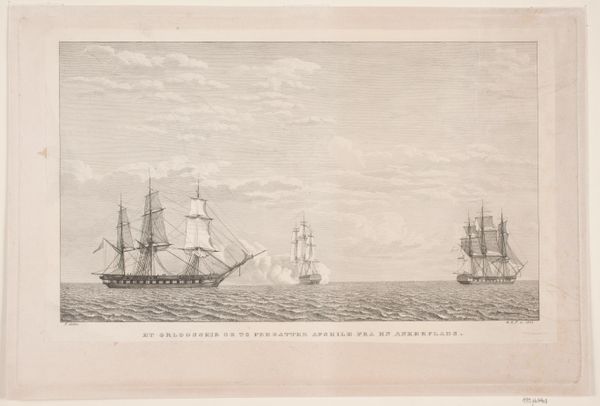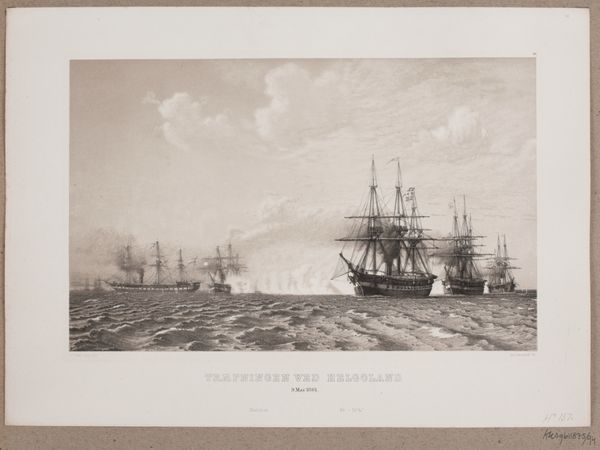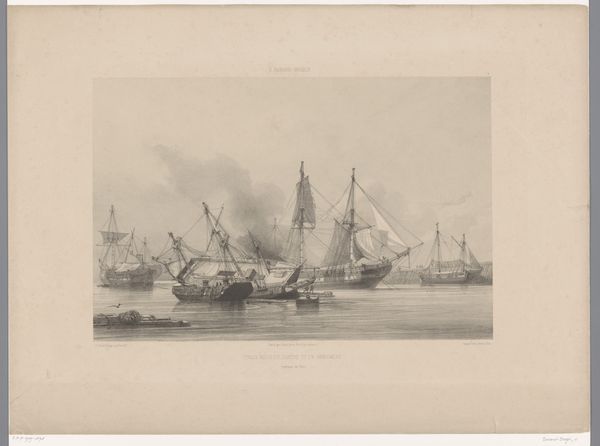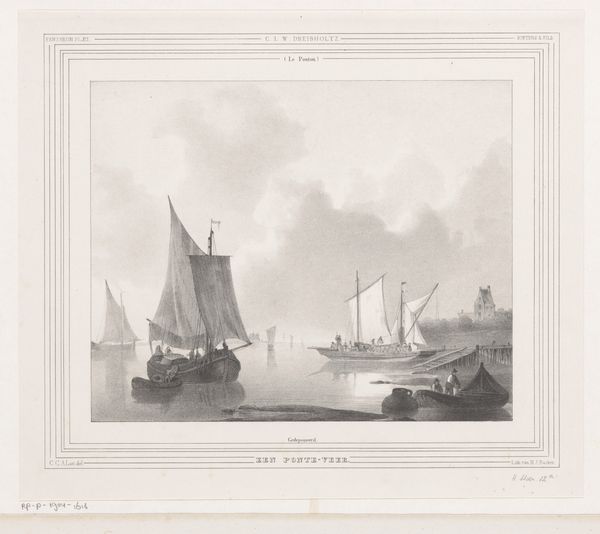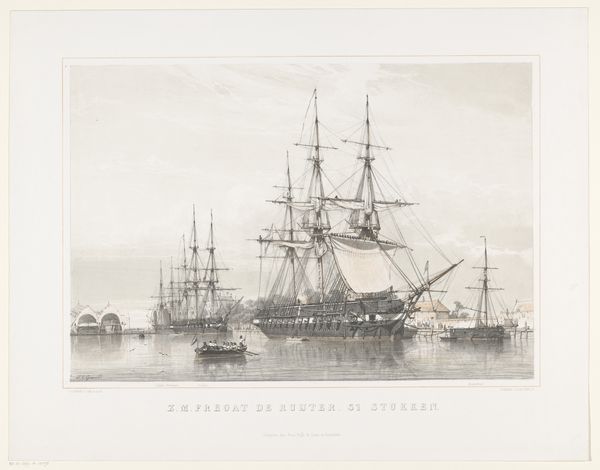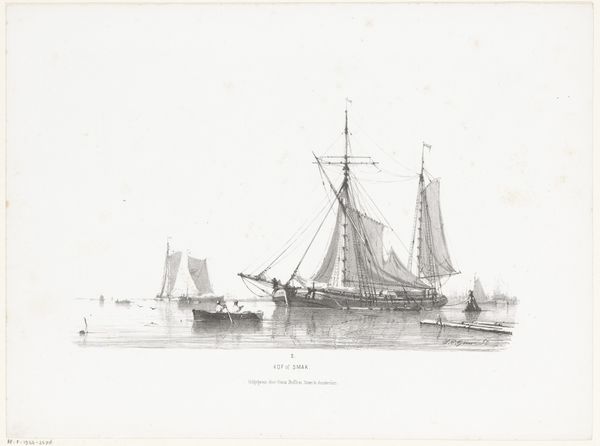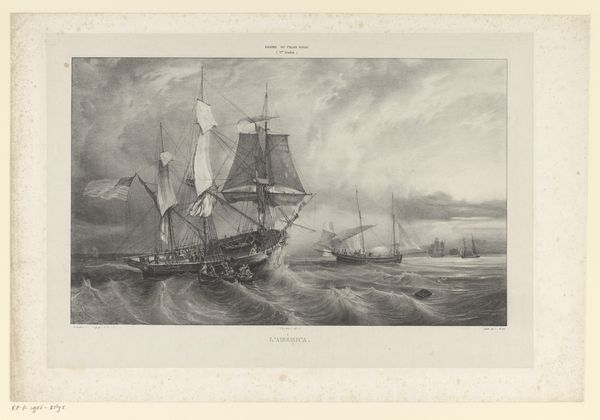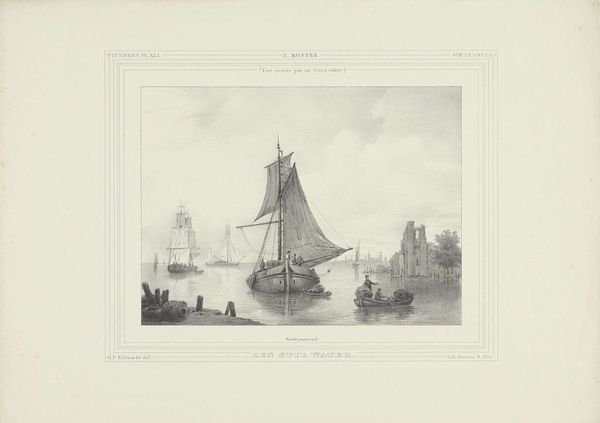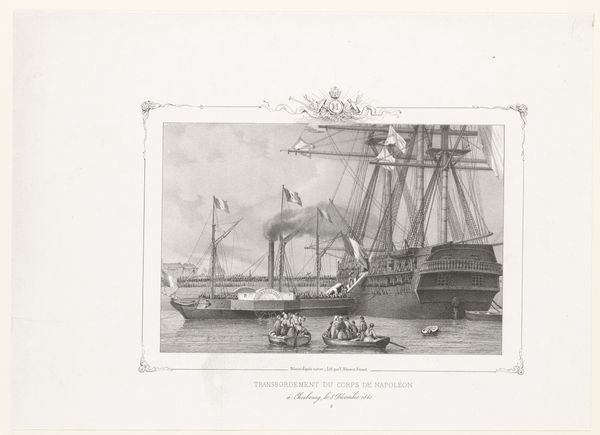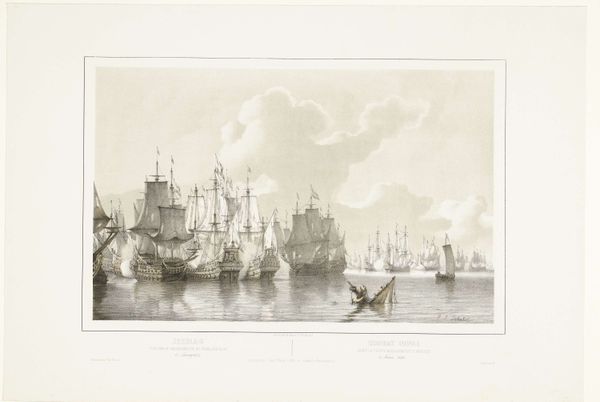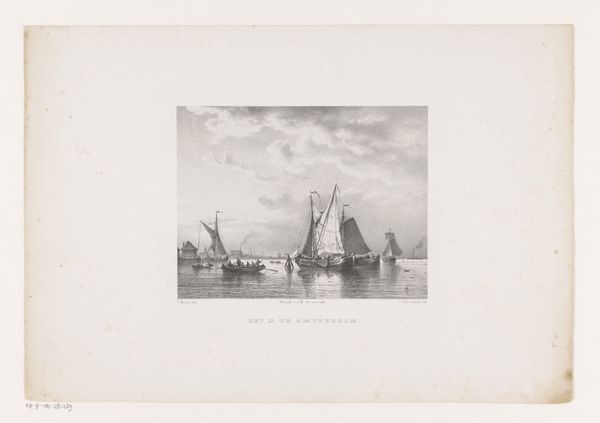
Den danske escadre i året 1841 unde rden meklenborgske kyst. Hvor kronprinsen forlader orlogsskibet Christian den ottende for at gå med dampskibet Kiel til Rostok 1880s
0:00
0:00
lithograph, print
#
pencil drawn
#
lithograph
# print
#
landscape
#
realism
Dimensions: 287 mm (height) x 400 mm (width) (billedmaal)
Curator: At first glance, this lithograph seems shrouded in the dust of history, but closer inspection shows us quite a lot. Editor: Dust is exactly the feeling this evokes. An old photograph found tucked away, bringing with it a silent grandeur tinged with melancholic detachment. It is rendered in such detail yet speaks of distance and formality. Curator: This is "The Danish Escadre in 1841 under the Mecklenburg Coast. Where the Crown Prince leaves the warship Christian the Eighth to go by steamer Kiel to Rostock", created in the 1880s by Adolph Kittendorff. The scene immortalizes a pivotal moment but the method of production, lithography, hints at the rise of print culture at that time. Editor: Ah yes, the transition of power visually underscored! I immediately note the central ship emitting smoke; a symbol, perhaps, of the old order passing as the Crown Prince departs via a new, steam-powered vessel. There is commentary here on the march of time and the inevitability of change that might feel relevant today, with its depiction of institutional flux. Curator: Precisely! Kittendorff masterfully utilizes visual cues that build on our cultural understanding of ships, steam, and ceremony to address how we view historical change. The ship “Christian the Eighth,” though magnificent, cedes relevance as steam-powered vessels redefine naval power and presence. It embodies both past achievements and their inherent temporality, underscoring our human struggle for enduring legacy through artifacts. Editor: A poignant reminder that progress also casts a long shadow, erasing much in its wake. By focusing on the prince's transit, it places individuals, their travels and decisions within a web of larger social and technical transformations—a commonality in how leadership continues navigating emergent technologies and evolving societal expectations. It pushes viewers to consider who benefits, who loses, and what traditions will remain amid innovation. Curator: Well said! What's especially significant here is how the artist merges naval symbols with a deep psychological understanding of how we, as societies, embrace and mourn evolution. Each sail and wisp of smoke contains layers of communal identity. Editor: It makes you ponder the images future generations will excavate from our present, and the stories that those images, fraught with bias, might accidentally narrate. This print highlights the essential act of curating visual dialogues between then and now. Curator: A beautiful way to frame it! And perhaps we see reflected in it our continuous, human pursuit to anchor ourselves amidst such transitions.
Comments
No comments
Be the first to comment and join the conversation on the ultimate creative platform.
